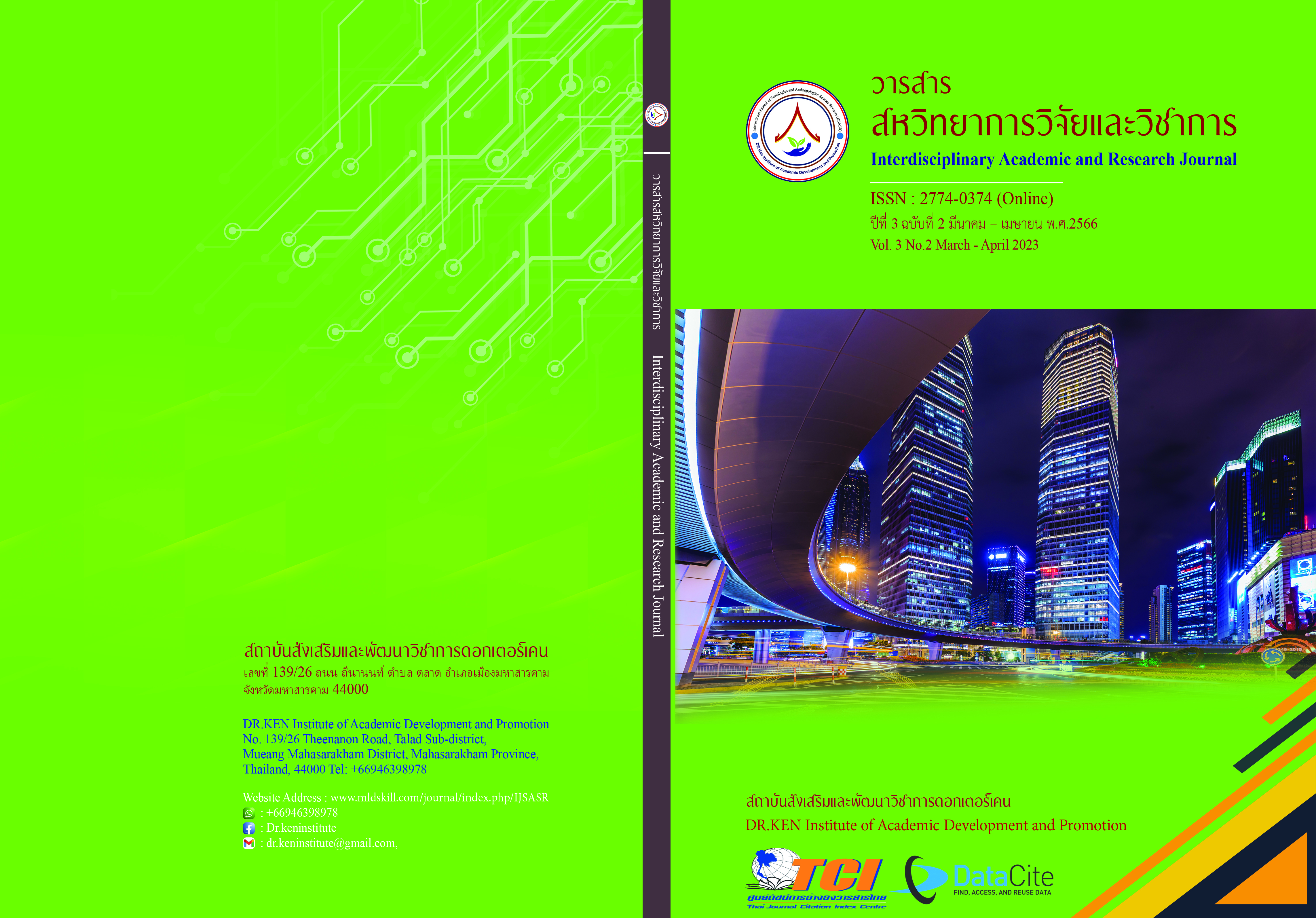Learning Readiness of Students in Mattayom 1 of Secondary Education Service Area Office 2
DOI:
https://doi.org/10.14456/iarj.2023.104Keywords:
Readiness; , Learning Readiness; , Student in Mattayom 1Abstract
The education systems for primary and secondary schools differ in terms of learning time, content, graduation objectives, and methods for evaluating learning achievement. Students transitioning from primary to secondary school often find the adjustment challenging, and research has shown that learning readiness plays a crucial role in determining learning achievement. Furthermore, studies have found differences in learning achievement between male and female students, suggesting that learning readiness may also vary between genders. This research aims to explore the potential differences in learning readiness between male and female students and their impact on academic achievement. The objectives of this research were 1) to study the learning readiness of students in Mattayom 1 and 2) to compare the learning readiness between males and females. The sample was 1,623 students in Mattayom 1, using the technique of multistage sampling. Data were collected by using a questionnaire and analyzed by using MANOVA. Findings are as follows: 1. The learning readiness of students in Mattayom 1; physical readiness had an average score of 39.53 equal to 65.88 percent, prior knowledge readiness had an average score of 3.40 equal to 84.88 percent, emotional and mental readiness had an average score of 10.34 equal to 73.85 percent, learning behavior readiness had an average score of 7.00 equal to 70.00 percent, readiness from the relationship between students and teachers had an average score of 6.21 equal to 56.45 percent, readiness from the relationship between students and classmates had an average score of 9.24 equal to 71.08 percent, and readiness from the relationship between students and family had an average score of 12.40 equal to 77.50 percent. 2. In overall learning readiness, there was a statistical difference between male and female students at a significance level of .05. The differences found in 6 from 7 variables consisted of physical readiness, prior knowledge readiness, emotional and mental readiness, learning behavior readiness, readiness from the relationship between students and classmates, and readiness from the relationship between students and family.
References
โชติกา เศรษฐธัญการ. (2562). การศึกษาเปรียบเทียบความสามารถในการใช้ภาษาระหว่างเพศหญิงกับเพศชายที่สะท้อนให้เห็นภาพพจน์ทางเพศ. วารสารมังรายสาร, 7(2), 17-31.
กระทรวงศึกษาธิการ. (2551). หลักสูตรแกนกลางการศึกษาขั้นพื้นฐาน พุทธศักราช 2551. กรุงเทพฯ: โรงพิมพ์ชุมนุมสหกรณ์การเกษตรแห่งประเทศไทย.
ปนัฐษรณ์ จารุชัยนิวัฒน์. (2560). การส่งเสริมความพร้อมทางการเรียน: รอยเชื่อมต่อที่ราบรื่นจากชั้นอนุบาลสู่ชั้นประถมศึกษาปีที่ 1. วารสารครุศาสตร์, 45 (2), 152-169.
สถาบันกวดวิชาเดอะเบรน. (2564). สอบเข้า ม.1 จากประถมสู่มัธยม การเปลี่ยนผ่านสำคัญของวัยเด็กสู่วัยผู้ใหญ่. Retrieved January 22, 2021, from: https://www.webythebrain.com/category/article.
สุวิมล ติรกานันท์. (2557). ระเบียบวิธีการวิจัยทางสังคมศาสตร์ : แนวทางสู่การปฏิบัติ. พิมพ์ครั้งที่ 12. กรุงเทพฯ: โรงพิมพ์แห่งจุฬาลงกรณ์มหาวิทยาลัย.
Amurdawati, G. (2020). Analysis on students’ learning readiness in junior high schools of pangkalpinang, bangka belitung. Universal Journal of Educational Research, 8(9), 3807-3813.
Anggresta, V., Vhalery, R. & Maya, S. (2020). The effect of learning readiness and climate classroom toward students’ learning activeness. ECONOMICA Journal Program Sduti Pendidikan Ekonomi STKIP PGRI Sumatera Barat, 8(2), 102-109.
Chorrojprasertl, L. (2020). Learner readiness-why and how should they be ready? Language Education and Acquisition Research Network Journal, 13(1), 268-274.
Dangol, R. & Shrestha, M. (2021). Contribution of gender on learning readiness among school students of Nepal. Journal of Curriculum Studies Research, 3(2), 19-36.
Dangol, R. (2019). Learning readiness and educational achievement among school students. The International Journal of Indian Psychology, 7(2), 467-476.
Krejcie, R. V., & Morgan, D. W. (1970). Determining sample size for research activities. Educational and Psychological Measurement, 30(3), 607–610.
The National Center on Parent, Family and Communication Engagement. (2016). Family Engagement and School Readiness. The National Center on Parent, Family, and Community Engagement.
UNICEF. (2012). School Readiness: A Conceptual Framework. New York. United Nations Children’s Fund. New York.
Voyles, M. J. (2011). Student academic success as related to student age and gender. A Dissertation Submitted to the Faculty of the University of Tennessee at Chattanooga.
Wood, Martha M. (2007). Learning readiness. southeastern center for the Enhancement of Learning, University System of Georgia. EURASIA Journal of Mathematics, Science and Technology Education, 16(10), 1-9.
Downloads
Published
How to Cite
Issue
Section
License
Copyright (c) 2023 จุฑามาศ เอี่ยมเกตุ, สุวิมล ติรกานันท์, กมลทิพย์ ศรีหาเศษ

This work is licensed under a Creative Commons Attribution-NonCommercial-NoDerivatives 4.0 International License.
Copyright on any article in the Interdisciplinary Academic and Research Journal is retained by the author(s) under the under the Creative Commons Attribution-NonCommercial-NoDerivatives 4.0 International License. Permission to use text, content, images, etc. of publication. Any user to read, download, copy, distribute, print, search, or link to the full texts of articles, crawl them for indexing, pass them as data to software, or use them for any other lawful purpose. But do not use it for commercial use or with the intent to benefit any business.
















.png)


